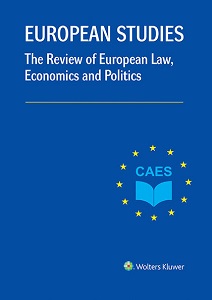Cyborgs on the Horizon. Are We Ready? Examining the (a)legality of Transhumanist Practices within the EU
Cyborgs on the Horizon. Are We Ready? Examining the (a)legality of Transhumanist Practices within the EU
Author(s): Pablo Martínez-Ramil, Haridian Bolaños-Frasquet, Maria Claudia Solarte-VasquezSubject(s): Human Rights and Humanitarian Law, ICT Information and Communications Technologies, Philosophy of Law, EU-Legislation
Published by: Univerzita Palackého v Olomouci
Keywords: cyborgs; transhumanism; posthumanism; right to bodily integrity; autonomy; consent; RFID; implants;
Summary/Abstract: Most western contemporary legal systems are grounded in natural law principles established by modern humanism even though various alternatives, post-humanism being among the most influential, start influencing their understanding. In addition, the effect of the rapid pace of technological development on humanity has made the inherent limitations of its rules and other social arrangements manifest, as the use of technology is growingly used for human enhancement. The advocacy seeking to expand the catalogue of human rights and to cover transhumanism has started to bear fruit, but more conceptual developments are needed to lay the foundations for a more systemic regulatory development. This reflection paper focuses on the use of microchip implants, from among the augmentation practices that have recently flown under the radar of legal scientific research. These electronic devices re-shape the experience of being human and their various applications suggest that the penetration levels of capacity enhancing technologies will continue to be on the rise. It will discuss and clarify whether and to which extent transhumanism, personal rights and private autonomy are connected, and the former sufficiently covered by the right to bodily integrity (RBI). The reflection will rely on a comparative and interpretative approach based on the extant literature, national and European Union (EU) regulatory initiatives, and recent doctrinal developments found in case law.
Journal: European Studies - the Review of European Law, Economics and Politics
- Issue Year: 9/2022
- Issue No: 2
- Page Range: 133-154
- Page Count: 22
- Language: English

